“Is your lower back begging for relief after a long day of work, parenting, or life in general?”
You’re not alone—and you’re certainly not powerless. As women cross the milestone of 30, changes in posture, muscle strength, and hormonal shifts can make the lower back more vulnerable to pain, tightness, and even injury. But here’s the good news: the right exercises can do wonders.
Whether you’re dealing with occasional discomfort or proactively protecting your spine, this guide will walk you through the 10 most effective lower back exercises designed specifically for women over 30—backed by fitness experts and tailored for your body’s evolving needs.
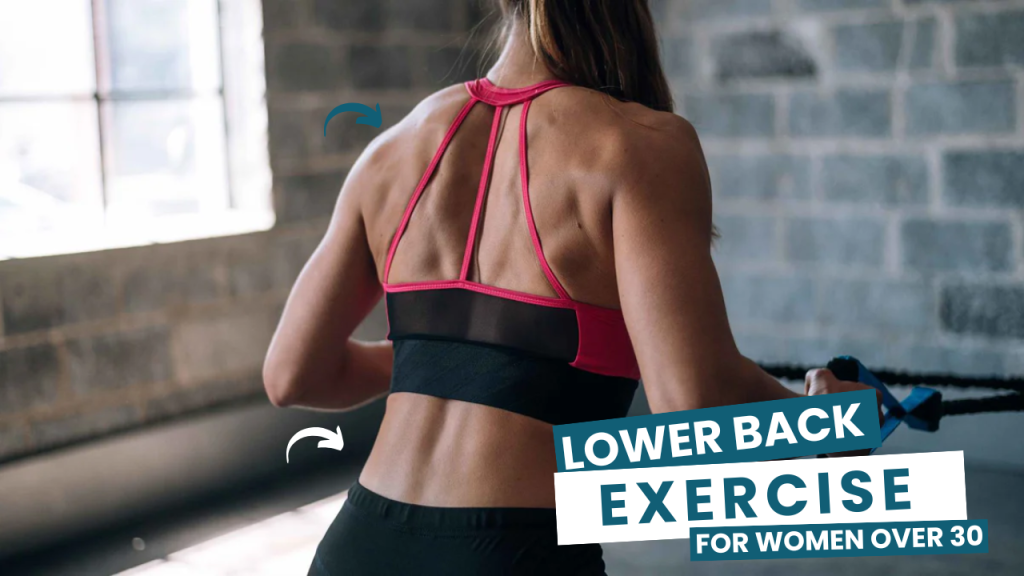
Table of Contents
Perks of Lower Back Exercises for Women Over 30
- Reduced Back Pain
Alleviates tension and tightness in the lumbar spine caused by sedentary lifestyle, aging, or poor posture.- Improved Posture
Strengthens muscles that support the spine, helping you stand and sit taller with better alignment.- Core Stability
Engages deep abdominal muscles, enhancing overall balance and protecting the lower back during daily movements.- Injury Prevention
Reduces risk of strains, herniated discs, and falls by building a stronger, more stable core and lower back.- Enhanced Mobility
Promotes flexibility in the hips, spine, and hamstrings, improving your range of motion.- Better Performance in Daily Activities
Makes lifting, bending, and twisting movements easier and safer—especially for moms or busy professionals.- Support for Pelvic Health
Strengthens muscles around the pelvic region, which is essential for postpartum recovery and bladder control.- Stress Relief
Many lower back stretches help release physical and mental tension, improving relaxation and sleep quality.- Improved Blood Flow
Encourages circulation to the lower spine and surrounding muscles, speeding up recovery and reducing inflammation.- Boosted Confidence & Energy
Moving pain-free and improving posture naturally boosts your self-esteem and physical vitality.
Do’s and Don’ts for Lower Back Exercises
| Do’s | Don’ts |
|---|---|
| Warm up with light cardio before starting. | Don’t rush through exercises—focus on form. |
| Keep your core engaged during exercises to protect your back. | Don’t overextend or push your body too hard. |
| Focus on controlled movements with slow and steady reps. | Don’t ignore pain—stop if something feels wrong. |
| Use proper posture while performing each exercise. | Don’t hold your breath—breathe deeply and steadily. |
| Stretch after your workout to enhance flexibility. | Don’t skip rest days; give muscles time to recover. |
| Use a mat or soft surface to protect your spine during floor exercises. | Don’t bend from the back when lifting—hinge at the hips. |
| Start with lighter weights or bodyweight before progressing. | Don’t perform exercises too quickly, as it may cause strain. |
| Consult a healthcare provider before starting a new exercise regimen, especially if you have pre-existing conditions. | Don’t neglect core and glute exercises—they’re key to supporting the lower back. |
What Can Happen After 30 Days of Lower Back Exercises
| What You Might Experience | Why It Happens |
|---|---|
| Reduced lower back pain | Strengthening muscles and improving flexibility relieve tension and discomfort. |
| Improved posture | Increased core stability and spinal alignment from regular exercises. |
| Greater flexibility | Stretching and strengthening muscles enhance mobility in the hips, back, and hamstrings. |
| Better core strength | Consistent exercises activate deep abdominal and lower back muscles, improving support. |
| Increased energy levels | Relief from pain and improved movement efficiency can leave you feeling more energized. |
| Improved balance and stability | Strengthened muscles and better posture help with overall body control. |
| Enhanced mood and stress relief | Physical activity triggers endorphin release, reducing stress and boosting mood. |
| Increased confidence in movement | Being pain-free and moving with ease improves daily performance and self-esteem. |
| Reduced risk of future injuries | Strengthening the lower back and core helps prevent strains and spinal issues. |
| Better quality sleep | Relief from discomfort can lead to better rest and recovery at night. |
Why Lower Back Exercises Matter After 30
As we age, our bodies naturally go through:
- Muscle loss (sarcopenia), especially if we don’t strength train.
- Postural changes, often from desk jobs or caring for children.
- Hormonal fluctuations that can affect joint stability and flexibility.
- A slower recovery rate from physical strain.
Strengthening your lower back improves core stability, posture, flexibility, and even boosts mental well-being. Plus, it’s key to preventing chronic pain, injuries, and even pelvic floor issues that become more common after 30.
Quick Tips Before You Start
- Always warm up before any workout (try light cardio or dynamic stretches).
- Focus on form over reps—quality trumps quantity.
- Pair these with core, glute, and hip exercises for maximum impact.
- If you feel sharp pain (not muscle fatigue), stop and consult a professional.
The 10 Best Lower Back Exercises for Women Over 30
1. Bird-Dog
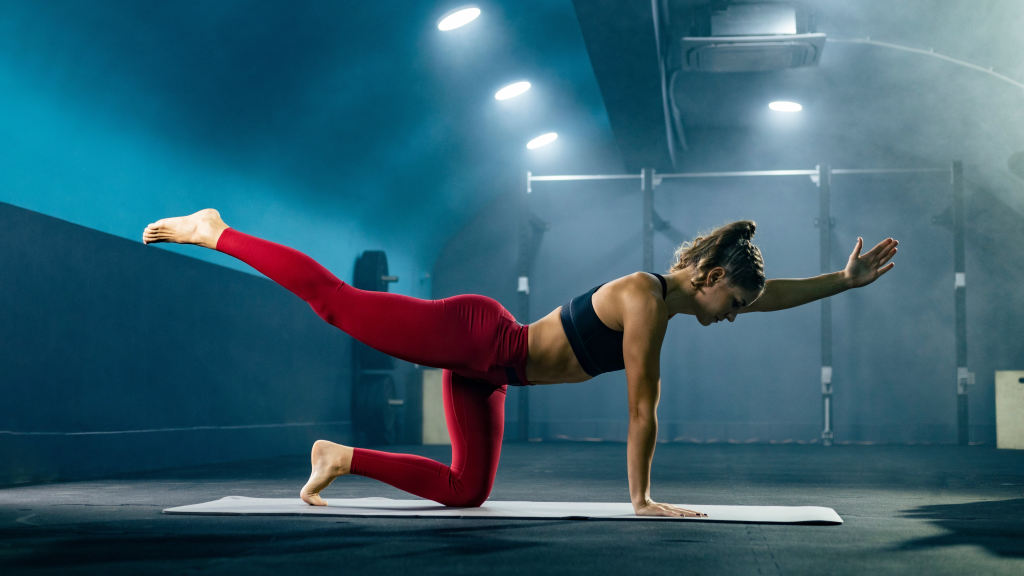
Targets: Lower back, core, glutes
Why it’s great: Builds spinal stability and balance.
How to do it:
- Start in a tabletop position (hands under shoulders, knees under hips).
- Extend your right arm and left leg simultaneously.
- Hold for 5 seconds, return, and switch sides.
Pro Tip: Keep your core tight and avoid arching the back.
2. Glute Bridge

Targets: Lower back, glutes, hamstrings
Why it’s great: Strengthens posterior chain and improves hip alignment.
How to do it:
- Lie on your back, knees bent, feet flat.
- Push through your heels and lift your hips.
- Hold for 2–3 seconds, lower down slowly.
Pro Tip: Add a resistance band for extra challenge.
3. Superman Stretch
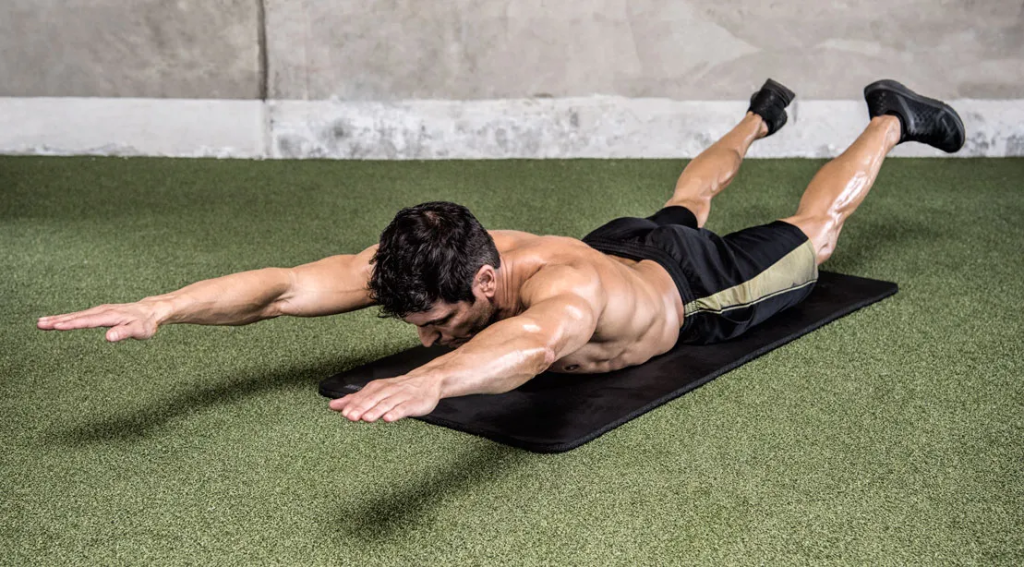
Targets: Erector spinae, glutes, shoulders
Why it’s great: Encourages spinal extension and posture correction.
How to do it:
- Lie face down, arms extended.
- Lift arms, chest, and legs off the ground simultaneously.
- Hold for 2–3 seconds, then lower.
Pro Tip: Keep neck neutral to avoid strain.
4. Cat-Cow Stretch
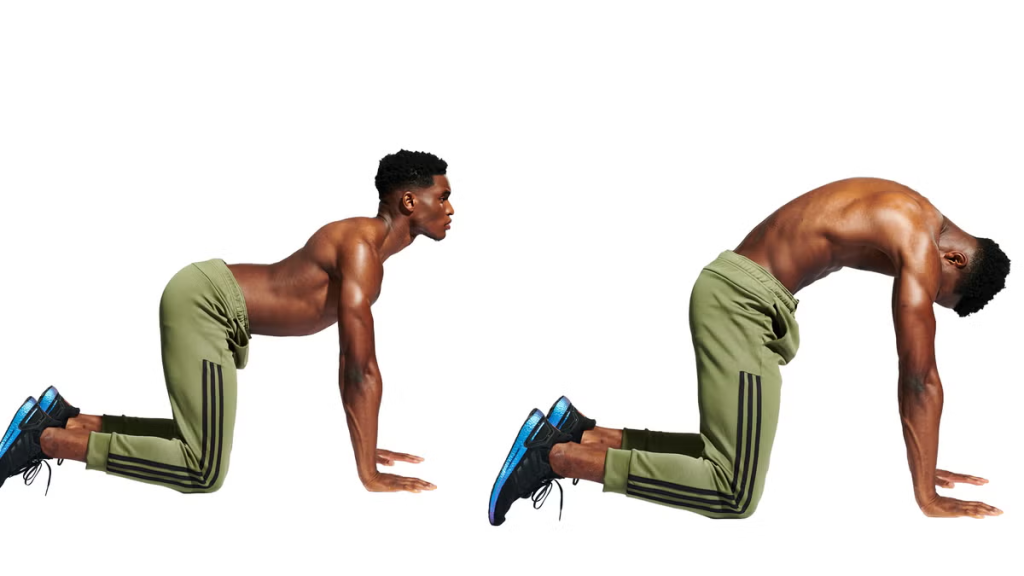
Targets: Spine mobility, lower back, abs
Why it’s great: Gently mobilizes the spine and improves posture.
How to do it:
- On all fours, inhale and arch the back (cow), exhale and round it (cat).
- Repeat for 8–10 slow reps.
Pro Tip: Sync breath with movement for added stress relief.
5. Pelvic Tilts
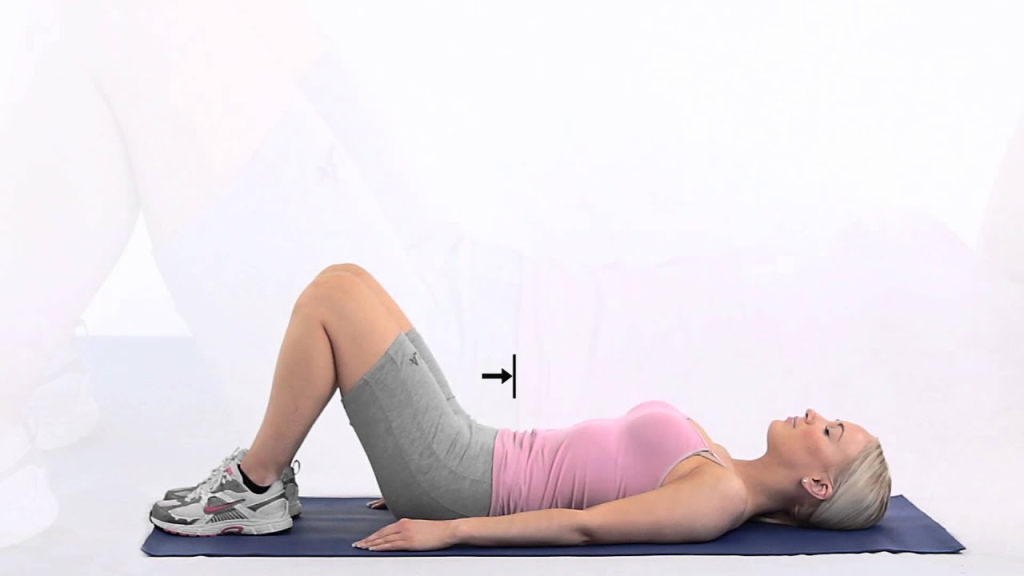
Targets: Lower back, core
Why it’s great: Builds awareness of spinal movement and relieves tightness.
How to do it:
- Lie on your back with knees bent.
- Flatten your back into the floor by tightening your abs.
- Hold 3–5 seconds and release.
Pro Tip: Great as a morning or bedtime stretch.
6. Wall Sits with Support
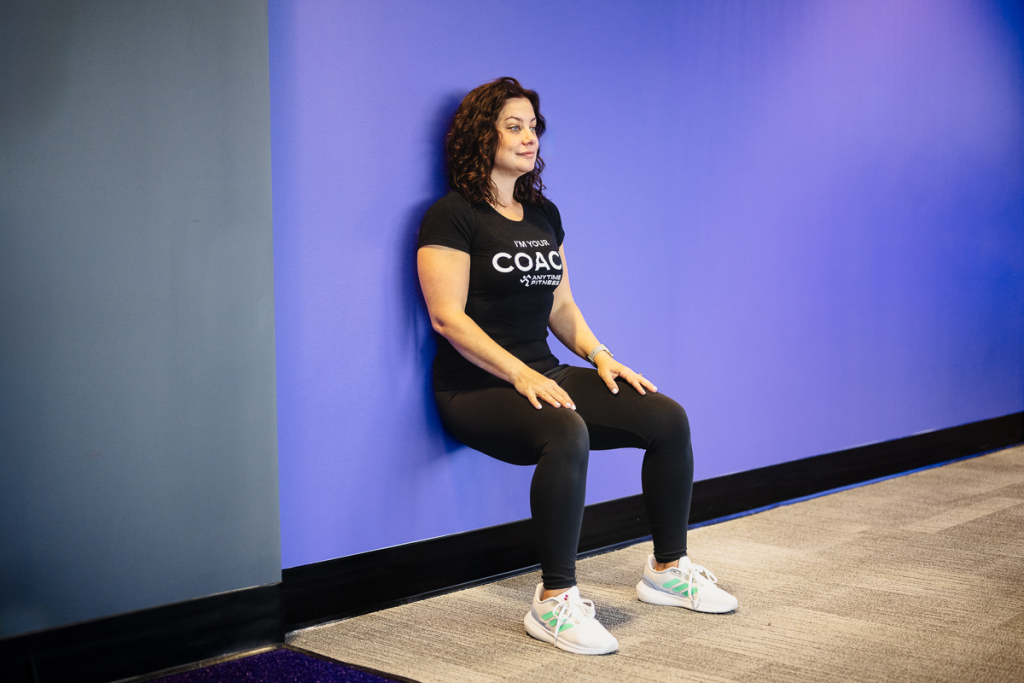
Targets: Lower back, thighs, glutes
Why it’s great: Isometric exercise that supports posture and strength.
How to do it:
- Stand against a wall, slide down to a seated position.
- Keep knees above ankles and hold for 30 seconds.
Pro Tip: Press lower back gently into the wall to activate lumbar muscles.
7. Child’s Pose
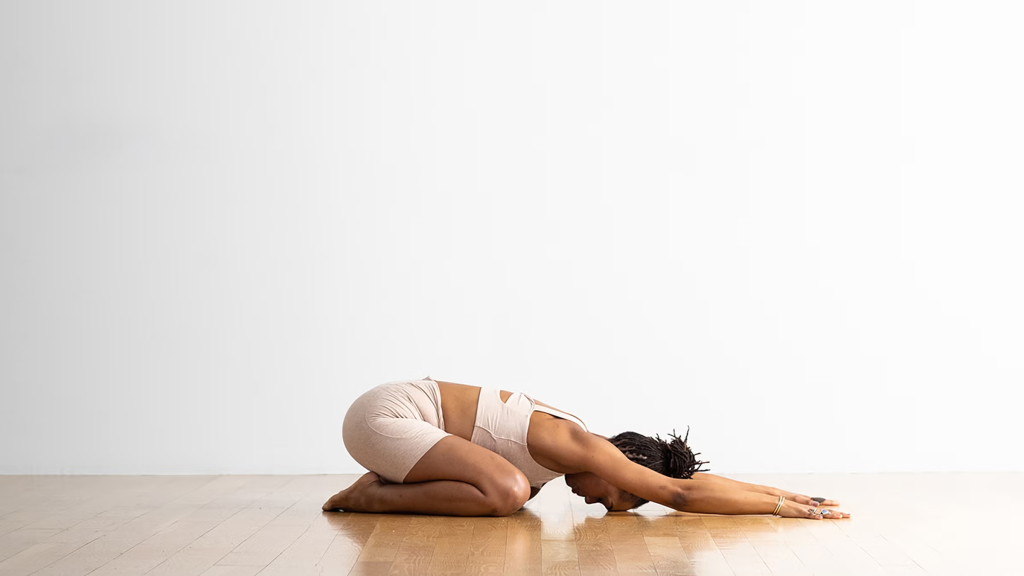
Targets: Spine, hips, lower back
Why it’s great: Encourages deep back release and calming effects.
How to do it:
- Kneel down and stretch your arms forward on the floor.
- Lower hips toward heels and forehead to the mat.
Pro Tip: Breathe deeply and stay for at least 30 seconds.
8. Hip Hinge with Dumbbells
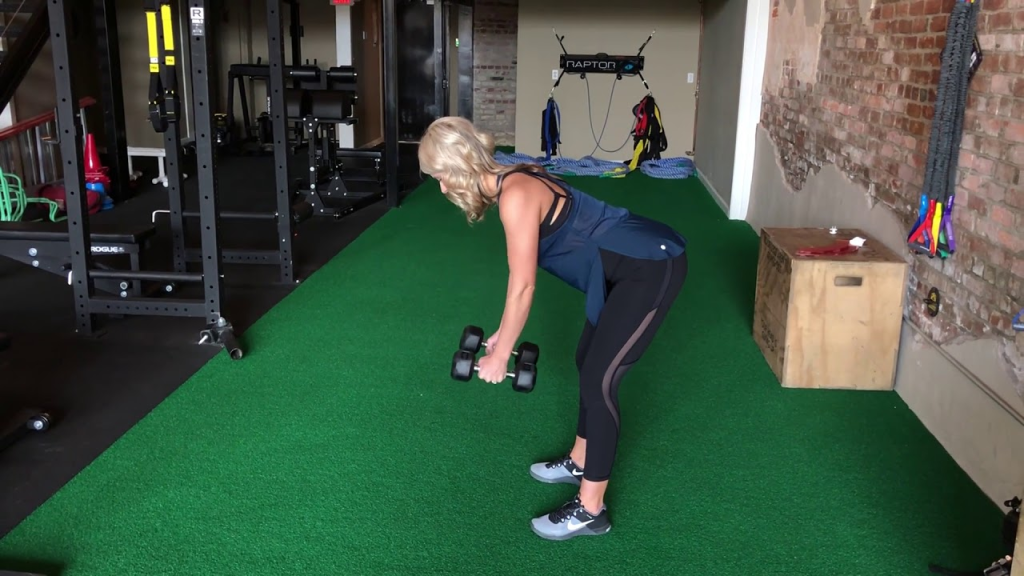
Targets: Lower back, glutes, hamstrings
Why it’s great: Mimics everyday movement (like picking up kids!) while building strength.
How to do it:
- Stand tall, hold light dumbbells.
- Hinge at the hips, keeping your back straight.
- Lower weights in front of thighs, then return.
Pro Tip: Avoid rounding your spine; keep shoulders retracted.
9. Plank (Modified or Full)
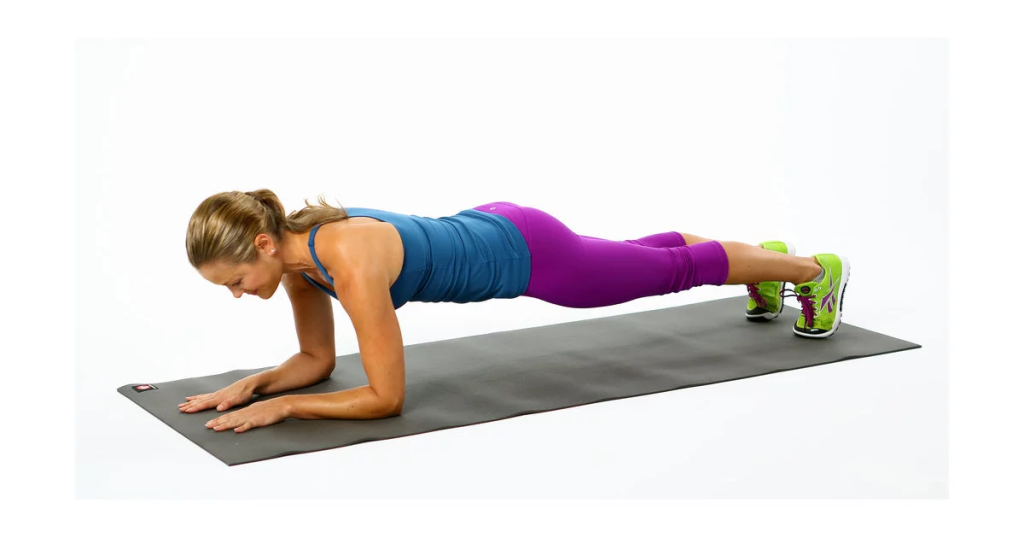
Targets: Core, shoulders, lower back
Why it’s great: Builds full-body stability and back support.
How to do it:
- Start on elbows (or hands) and knees (or toes).
- Hold for 20–60 seconds.
Pro Tip: Pull your belly button toward your spine to engage deep core muscles.
10. Standing Forward Bend (with Support)
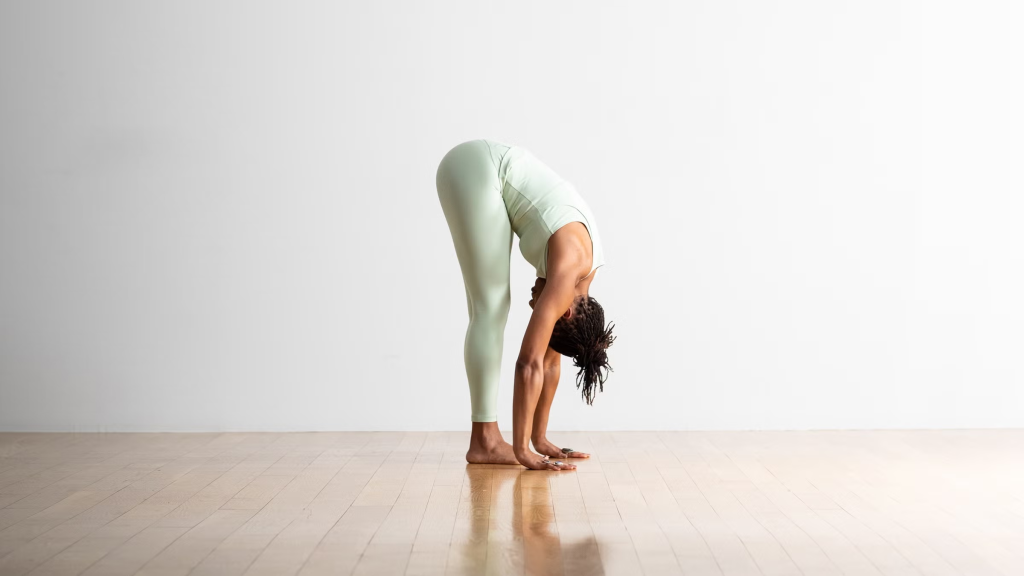
Targets: Lower back, hamstrings
Why it’s great: Increases flexibility and releases tightness in the posterior chain.
How to do it:
- Stand tall, fold forward at the hips.
- Let arms hang or rest on a chair if needed.
Pro Tip: Slight bend in the knees helps avoid strain.
Bonus: Post-Workout Stretch + Recovery Tips
After finishing these exercises, take a few minutes to:
- Gently stretch your lower back with knees-to-chest.
- Use a foam roller on the hips and glutes.
- Hydrate and rest to allow muscles to recover.
1-Week Lower Back Exercise Plan for Women Over 30
| Day | Exercise | Reps/Duration | Details |
|---|---|---|---|
| Day 1: Strength & Core Activation | Pelvic Tilts | 3 sets of 10-15 reps | Engage your core to flatten your lower back against the floor. |
| Bird-Dog | 3 sets of 10 reps per side | Focus on maintaining a neutral spine. | |
| Bridge | 3 sets of 12 reps | Squeeze your glutes at the top to activate the lower back and hips. | |
| Day 2: Mobility & Stretching | Cat-Cow Stretch | 3 sets of 10 reps | Flow between the two movements to increase spinal flexibility. |
| Child’s Pose | Hold for 30-60 seconds, 3 times | Focus on deep breathing and relaxing the lower back. | |
| Knee-to-Chest Stretch | Hold for 30 seconds per leg, 3 times | Gently pull your knee toward your chest to release lower back tension. | |
| Day 3: Strength & Flexibility | Superman | 3 sets of 10-15 reps | Lift arms and legs while keeping your back engaged. |
| Side Plank with Leg Lift | 3 sets of 10 reps per side | Strengthens the obliques and lower back stabilizers. | |
| Hip Hinge | 3 sets of 12 reps | Focus on bending at the hips, not the lower back. | |
| Day 4: Rest & Recovery | Rest Day | – | Take a break from exercises to allow your muscles to recover. |
| Day 5: Mobility & Activation | Standing Forward Bend Stretch | Hold for 30-45 seconds, 3 times | Stretch your hamstrings and lower back while keeping knees slightly bent. |
| Seated Spinal Twist | Hold for 30 seconds per side, 3 times | Focus on gently twisting from the waist to improve spinal flexibility. | |
| Pelvic Tilts (Revisited) | 3 sets of 10-15 reps | Focus on controlled movement and breathing. | |
| Day 6: Full Body Strength | Glute Bridges | 3 sets of 15 reps | Lift your hips while keeping your back neutral. |
| Plank | Hold for 30-45 seconds, 3 times | Engage your core, avoiding sagging or arching your back. | |
| Leg Raises | 3 sets of 12-15 reps | Focus on controlled movements and avoid straining your lower back. | |
| Day 7: Stretch & Relaxation | Child’s Pose with Arm Reach | Hold for 1 minute | Stretch your back and shoulders for relaxation. |
| Thread the Needle Stretch | Hold for 30-45 seconds per side, 3 times | Helps to open up the thoracic spine and relieve lower back tension. | |
| Standing Quad Stretch | Hold for 30 seconds per leg, 3 times | Release tightness in the quads, which can affect the lower back. |
Tips:
- Gradually increase reps or duration based on your comfort level.
- Warm-up before each workout with gentle stretching or a short walk.
- Cool down after exercises by holding stretches for longer durations (up to 60 seconds).
- Focus on breathing deeply and maintaining proper form throughout each movement.
Final Thoughts
Strengthening your lower back isn’t just about fitness—it’s about living pain-free, confidently, and actively. Whether you’re juggling a career, motherhood, or both, these exercises give your body the support it needs to thrive well beyond 30.
Remember: Your back is your backbone—literally. Keep it strong, and everything else falls into place.
Frequently Asked Questions (FAQs)
Why is lower back pain common for women over 30?
As women age, muscle imbalances, decreased core strength, hormonal shifts, and lifestyle habits like prolonged sitting or lifting children can contribute to lower back discomfort. Strengthening and stretching the back helps prevent chronic pain and supports long-term mobility.
Can these exercises help with existing lower back pain?
Yes, many of these exercises are designed to relieve mild to moderate lower back pain. Movements like pelvic tilts, child’s pose, and cat-cow are especially beneficial. However, consult a medical professional before beginning if your pain is severe or persistent.
How often should I do lower back exercises?
For best results, aim for 3 to 4 sessions per week, allowing a day of rest between sessions. Consistency is key. Pairing these workouts with general core and glute strengthening will amplify results.
Are these exercises safe during pregnancy or postpartum?
Some exercises like cat-cow, bird-dog, and pelvic tilts are commonly recommended during pregnancy and recovery. However, every woman’s body is different—speak with your healthcare provider or pelvic floor therapist before starting.
Do I need any special equipment?
No! Most exercises require only your body weight and a comfortable mat. For added resistance, you can incorporate light dumbbells, resistance bands, or a stability ball—but they’re optional.
Can these exercises help improve posture?
Absolutely. Many of these moves target muscles responsible for spinal alignment, hip mobility, and core control, which are critical for good posture. Better posture also reduces strain on the lower back and neck.
How long until I see results?
You may notice relief and improved flexibility within a few sessions. For noticeable strength and posture improvements, give it 4 to 6 weeks of consistent practice.





